The new Suunto 9 watch comes with an innovative feature called FusedTrack which according to Suunto improves GPS tracking accuracy while the watch is in battery saving mode. The watch has two battery saving modes; Endurance and Ultra. In the Endurance mode the watch retrieves GPS position every 60 seconds and in the Ultra mode every 120 seconds. If the watch is not in a battery saving mode, it retrieves GPS position much more frequently, every second to be precise.
So, if you enable the Ultra or Endurance mode, the watch will use the FusedTrack feature to improve GPS tracking accuracy. This in simple terms means that it will utilize motion sensors (accelerator, gyroscope etc.) to track your movement between the 60 or 120 seconds while it’s not connected to the GPS. However, note that the FusedTrack feature works only in running and trail running sport mode – which is kind of a bummer for us hikers. We could really use this feature on multi-day trips where recharging the watch is often impossible. Nevertheless, ever since I bought the Suunto 9 watch I’ve been wondering how reliable the FusedTrack feature is and therefore I decided to conduct a simple experiment.
I found a very twisted running track and GPS tracked my runs on this track with the Suunto 9 watch set to Ultra, Endurance and normal mode respectively. For better comparison and reliability, I also tracked my runs on this track with my old Suunto Ambit 2 watch. Below you will find my results. However, for better comprehension I’ll first explain the basics about GPS tracking and how I conducted this experiment.
Table of Contents:
- GPS Tracking Basics
- How did I conduct this experiment?
- The Testing Track
- Tracking with FusedTrack in Endurance Mode (60 sec. GPS interval)
- Tracking with FusedTrack in Ultra Mode (120 sec. GPS interval)
- Conclusion
GPS Tracking Basics
So, how does GPS tracking work? It’s actually quite simple – the watch retrieves GPS data such as longitude, latitude and altitude in specified intervals, saves it as GPS points and then calculates the distance, ascent, descent and other relevant information. The shorter the interval, the more precise is the information about the track such as the distance, ascent and descent. The image below will give you an idea what happens when you increase the interval from 1 second to 60 seconds without using FusedTrack or any other similar feature. The red line represents 1-second GPS tracking interval and the blue line represent 60-seconds GPS tracking interval.
As you can see on the image above GPS tracking becomes very inaccurate when you switch from 1-second interval to 60-seconds interval. The length of the blue line (60 seconds) is obviously much shorter than the length of the red line (1 second) and thus the calculated distance will also be shorter.
So, now you might ask why do GPS devices even have long tracking intervals as an option? The thing is that a longer tracking interval consumes less battery. If the watch retrieves GPS data every second it needs to be constantly connected to the GPS while at 60-seconds interval it only connects to GPS once a minute. Obviously, this decreases the battery consumption.
Note that using short GPS tracking interval is especially important for “high-speed” sports such as cycling and running. For example, when you are running your location will change for around 200 meters in 60 seconds while during hiking or mountaineering in difficult terrain it probably won’t change for more than 50 meters.
How did I conduct this experiment?
I conducted several runs on the exact same running route and recorded them with Suunto 9 and Suunto Ambit 2 watch in different modes:
- Suunto 9 – Normal Mode (1-second GPS tracking interval)
- Suunto 9 – Endurance Mode with FusedTrack (60-seconds GPS tracking interval)
- Suunto 9 – Ultra Mode with FusedTrack (120-seconds GPS tracking interval)
- Suunto Ambit 2 – Best GPS Accuracy (1-second GPS tracking interval)
- Suunto Ambit 2 – Okay GPS Accuracy (60-seconds GPS tracking interval)
Note that Suunto 9 features 1-second, 60-seconds and 120-seconds GPS tracking intervals while Suunto Ambit 2 features 1-seconds, 5-seconds and 60-seconds GPS tracking intervals. You can read more Suunto 9 tracking intervals here.
After I recorded all runs, I exported the GPX tracks from Suunto Movescount app (discontinued in 2020 but reliable until then) and used GPS track tools to compare them. So, let’s see the track where I was testing the reliability of the FusedTrack feature.
The Testing Track
Total Distance – Suunto 9: 5.64 km
Total Distance – Suunto Ambit 2: 5.63 km
Total Ascent – Suunto 9: 35 m
Total Ascent – Suunto Ambit 2: 36 m
Total Descent – Suunto 9: 43 m
Total Descent – Suunto Ambit 2: 40 m
Explanation:
First, I recorded the track with Suunto 9 and Suunto Ambit 2 watch at 1-second interval to get precise information about the distance, total ascent and total descent. As you can see above the results don’t differ much. Nevertheless, when I took a close look at the tracks on the map, I concluded that the Ambit watch produced a more accurate GPS track. This doesn’t surprise me because the Ambit watch has an external GPS antenna. Therefore, I decided to test the FusedTrack feature against the 1-second interval GPS track from the Ambit watch.
Tracking with FusedTrack in Endurance Mode (60 sec. GPS interval)
Real Distance: 5.63 km
FusedTrack Distance (60 sec): 5.53 km
Real Total Ascent: 36 m
FusedTrack Ascent (60 sec): 104 m
Real Total Descent: 40 m
FusedTrack Descent (60 sec): 27 m
Explanation:
As you can see on the image above the FusedTrack feature works very well. Note that the GPS tracking interval was set to 60 seconds and yet the GPS track does not differ much from Suunto Ambit’s 1-second GPS track. The measured distance is also very accurate – it differs from real distance for only 100 meters. Do note that this is a very twisted running track and on a straighter track the difference would most likely be even smaller. However, the ascent and descent are not so accurate which surprises me – after all the watch has a barometer.
So, let’s see how 60-seconds tracking interval looks like without FusedTrack feature.
As you can see above, the FusedTrack indeed did its job and tracked my movement between the 60 seconds when the watch was not connected to GPS. The Ambit watch measured the total distance of 5.06 kilometers at 60-seconds tracking interval which creates an error of 600 meters. The Suunto 9 watch with FusedTrack enabled created an error of only 100 meters at the same tracking interval. Below is a closeup of a tricky stretch. The red line is indeed more accurate.
Tracking with FusedTrack in Ultra Mode (120 sec. GPS interval)
Real Distance: 5.63 km
FusedTrack Distance (60 sec): 5.50 km
Real Total Ascent: 36 m
FusedTrack Ascent (60 sec): 36 m
Real Total Descent: 40 m
FusedTrack Descent (60 sec): 40 m
Explanation:
My first reaction to this map was to double check that I exported the right track because I simply couldn’t believe that the Suunto 9 watch can produce so accurate GPS track at a 120-seconds tracking interval. The total distance differs from real distance for only 130 meters which is amazing considering that the watch retrieved GPS data only every two minutes. What surprises me even more is that the total ascent and total descent are also 100% correct which was not the case while I was tracking with FusedTrack in endurance mode (60-seconds interval). I guess ascent and descent are hit or miss with FusedTrack enabled.
Conclusion
During this experiment I figured out that the FusedTrack feature is actually very reliable. In the endurance mode (60-seconds tracking interval) the difference between measured distance and real distance on a 5.63 kilometers long track was only 100 meters while in the ultra mode (120-seconds tracking interval) the difference was 130 meters. This is really not a lot considering that the testing track was very twisted. However, when it comes to ascent and descent the readings were not always accurate. Nevertheless, I think that FusedTrack is a great feature and I believe that we’ll see it in many future Suunto watches. It allows you to prolong the battery life of your watch without significantly sacrificing the accuracy of GPS tracking. The battery of Suunto 9 lasts for 40 hours in the Endurance mode and 120 hours in the Ultra mode, which is indeed impressive.
I’d love to hear about your experiences with the FusedTrack feature. Write them in the comments section below.
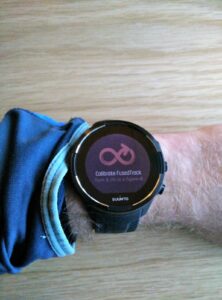
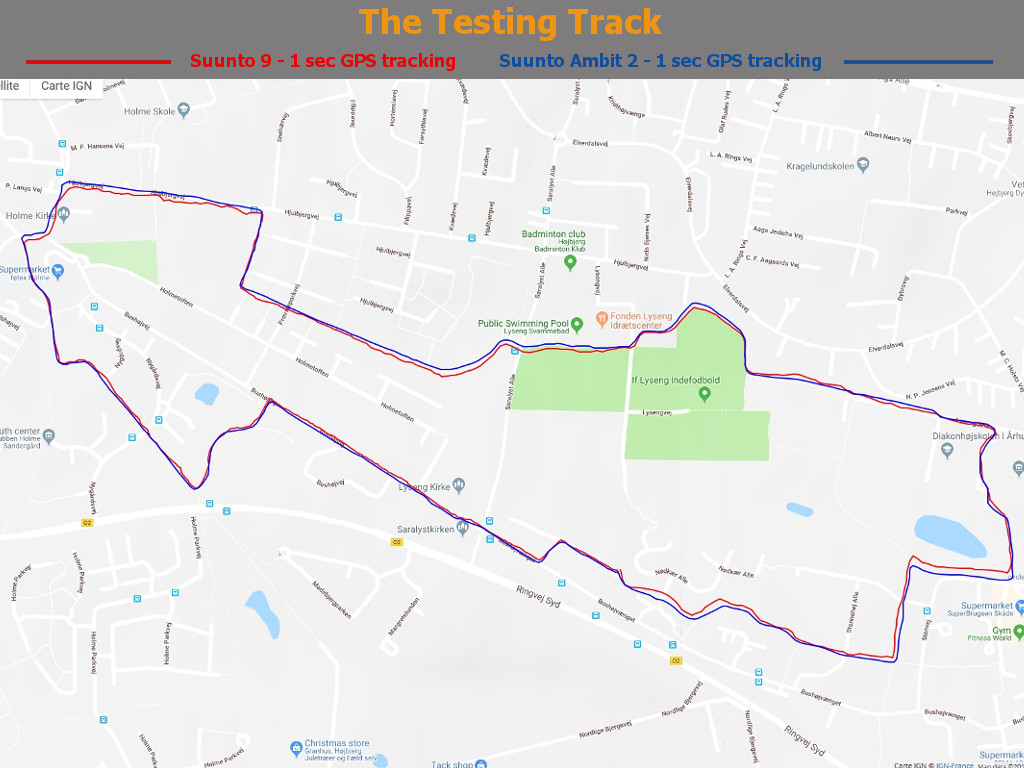
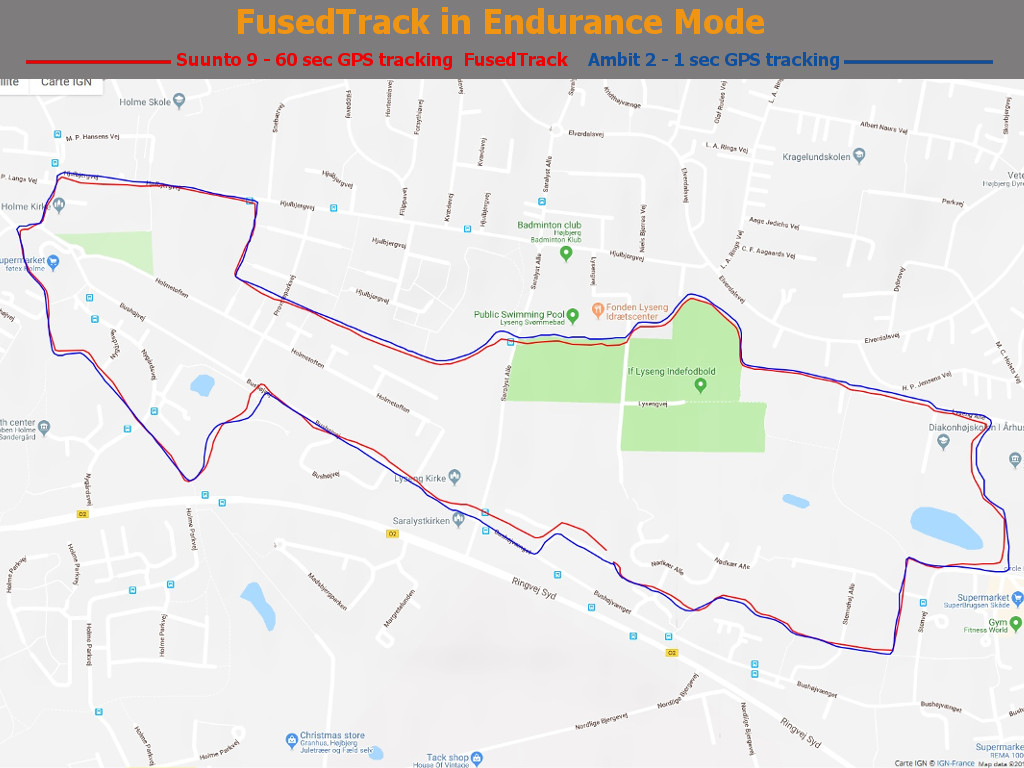
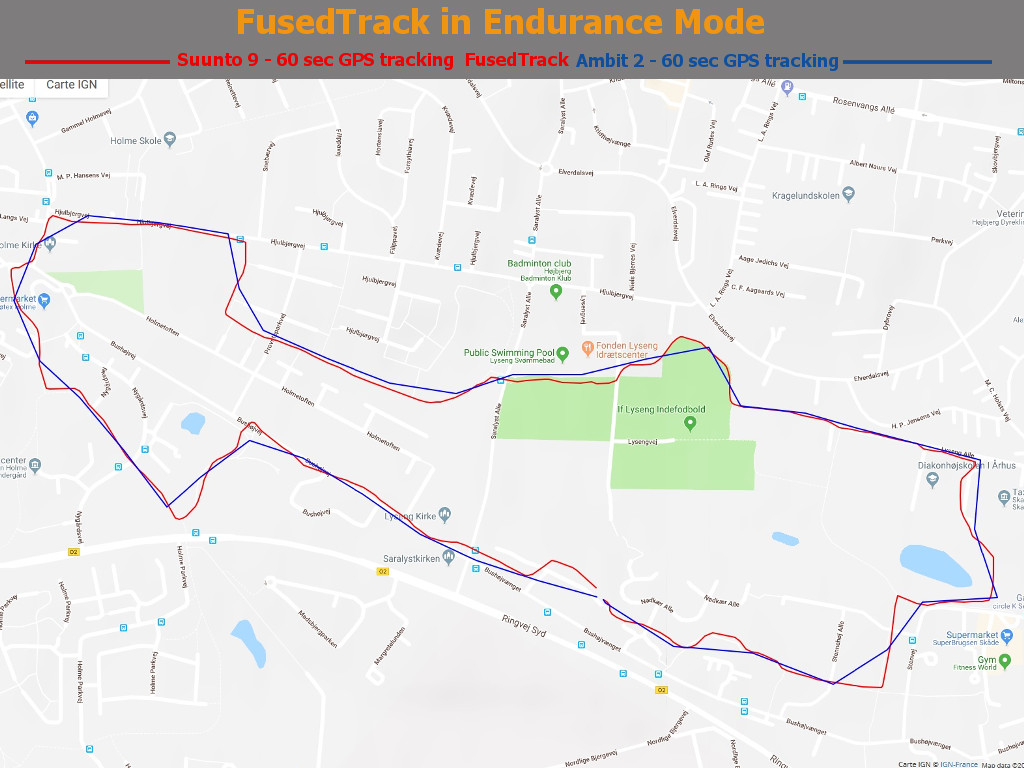
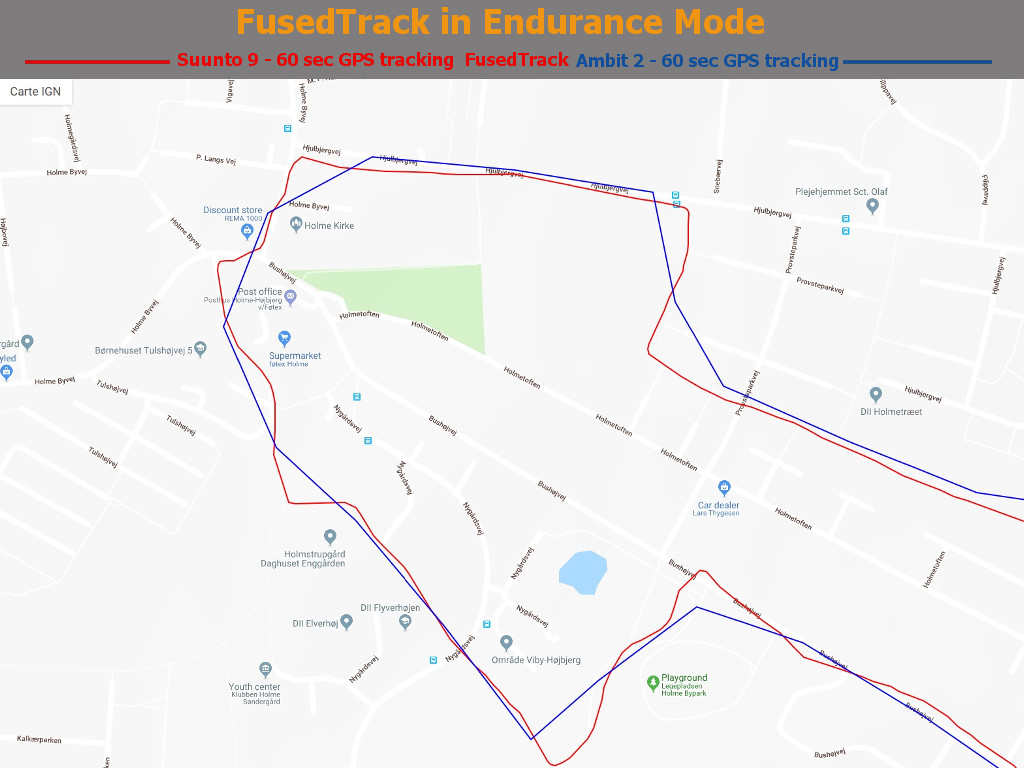
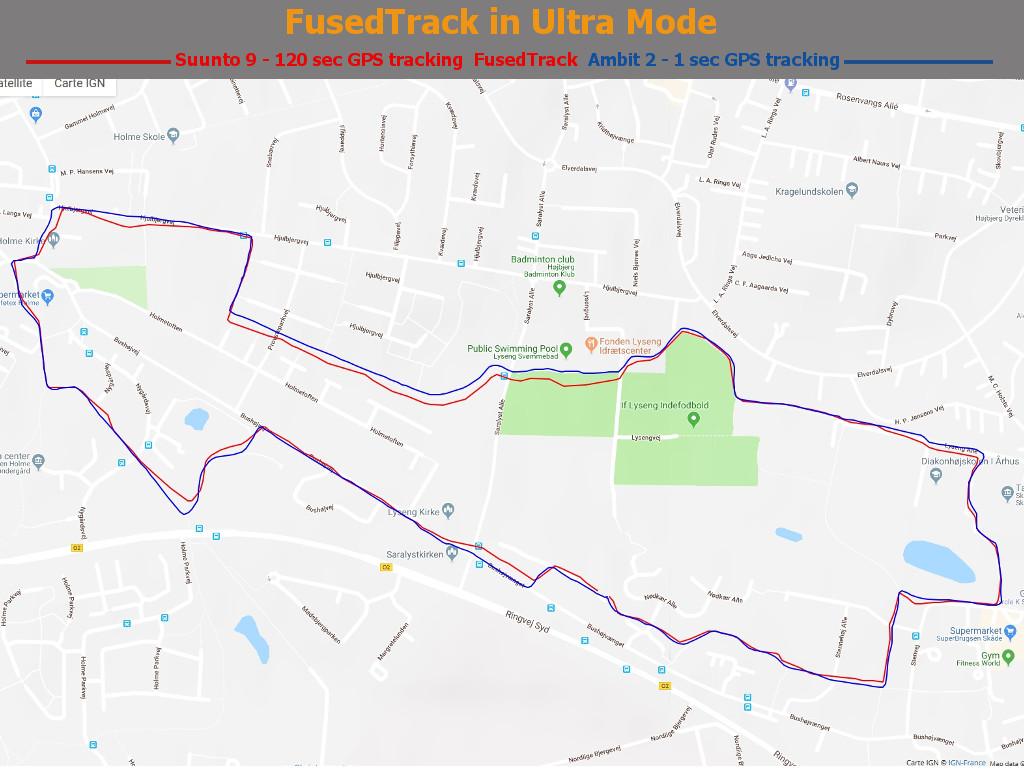

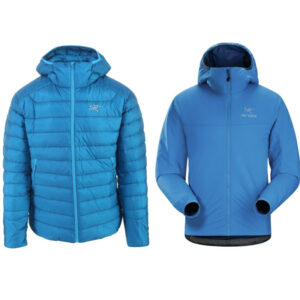

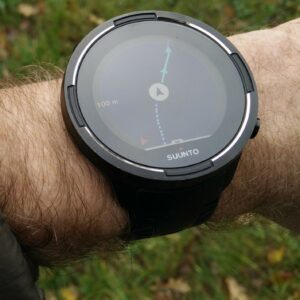


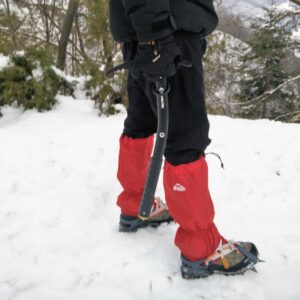


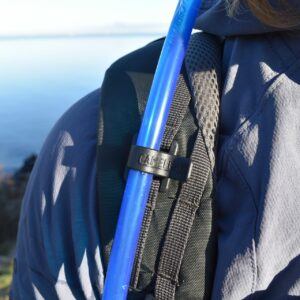











Great article. I enjoy my suunto 9 as well and hate we do not get FusedTrack while hiking. Be aware though it is not the FusedTrack that is responsible for the asc/dsc but the so called FusedAlti (existed in Ambit watches too). Basically it uses GPS and Baro to calculate the altitude. It might be that the watch was updating the correct altitude while you ran in Endurance, hence the difference – it re-calibrated the baro stuff?!
Hi Hristjan,
you are right – FusedTrack is not responsible for ascent and descent. I’m not sure what happened in the Endurance mode. It might be just one wrong reading that significantly inflated the ascent.
Hi.
Great experiment! And great feature…. however… The las weekend I used my Suunto 9 Baro in a long trekking race and the watch was all the time asking me to “Calibrate Fusedtrack”. I didn’t know how to do it and it was really annoying cause I couldn’t see any screen for more than one second cause the “Calibrate Fusedtrack” kept popping up all the time.
Perhaps it would be better if the “Calibrate Fusedtrack” message gives up after some time…
Hi Eduardo,
This sounds annoying! Yeah, maybe it would be better if the message would disappear after a while. However, the watch can’t accurately track your activity in Ultra and Endurance modes if fused track/compass is not calibrated. You can see here how to calibrate fused track. It’s good to memorize this movement because the watch always prompts for calibration when it’s the least convenient 🙂
Best regards,
Blaz